Dr. Gary W. Chu said “I do” to speeding up a patient’s orthodontic treatment for her wedding day
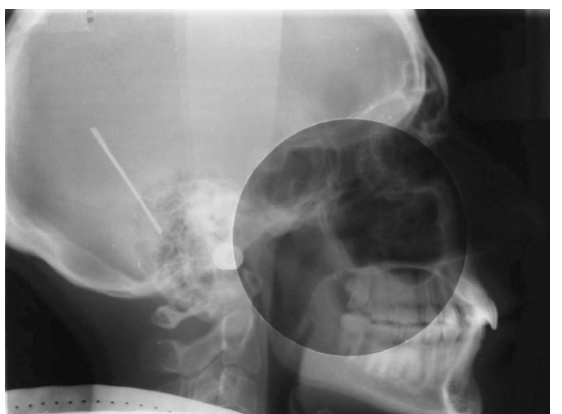
Five years ago, if a bride-to-be had come to my orthodontic practice requesting to start and complete her treatment prior to her wedding that was less than a year away, it was highly unlikely that neither I nor any other orthodontist could safely and effectively make that request a reality.
[userloggedin]
In fact, over the years, orthodontists have consistently been challenged to meet patients’ deadlines because the field simply didn’t have the technology and innovation to do so without the use of drugs or invasive surgery. Today, however, with the advancements that are happening as a result of the emergence of accelerated orthodontics, I am able to give patients healthy, beautiful smiles just in time for their weddings, graduations, or other special deadlines.
At my practice, Chu Crew Orthodontics in Racine, Wisconsin, we offer patients AcceleDent®, an FDA-cleared, Class II medical device that speeds up treatment by as much as 50% and relieves the discomfort associated with wire adjustments. Therefore, when a soon-to-be bride walked into my practice in the fall of 2013, I was confident that we could help her achieve the smile she wanted in time for her big day, which was just 9 months away. She was one of my first AcceleDent patients, and I was extremely pleased with the results and thought it would be beneficial to share this case with my peers.
The 24-year-old patient presented in September 2013 with Class II, Division I malocclusion which specifically included 12 mm of significant crowding in the lower arch, a buccal crossbite between tooth No. 5 and tooth No. 28, and a complaint of protruding canines. Her overbite was 80% and overjet was 2 mm. She had a deep curve of Spee, and her upper midline was 0.5 mm to the left. Adding to the complexities of her malocclusion, the bride was an adult patient which makes tooth movement more difficult due to the fact that bone remodeling in orthodontics is markedly reduced in the adult population.
I remember clearly this patient telling me that she wanted to look the best she possibly could for her wedding pictures. That resonated with me from the very beginning, which is why I offered her AcceleDent. I was confident that with this innovative technology we could reduce her projected 18-month treatment time to 9 months.
Light forces and minimum friction
I felt confident that I could help her meet her deadline primarily because of the AcceleDent technology and also because my treatment plan included the Damon® Q™ fixed appliance bracket system. I knew that the Damon Q brackets in conjunction with AcceleDent would deliver the optimal movements and light forces that I’ve found effective with my patients. In my opinion, the Damon System is superior because it utilizes light forces and passively allows archwires to slide through the bracket slot. As a result, the brackets promote biocompatible movement, which leads to far more comfortable and efficient treatment.
I’ve been intrigued by the technology behind AcceleDent since it was being evaluated in clinical trials. Having attended dental school at the University of Texas at San Antonio, I knew how reputable and forward thinking the university’s research was at my alma mater. Prior to its recent publication in Seminars in Orthodontics,1 I reviewed Dr. Dubravko Pavlin’s randomized controlled trial that demonstrated how pulsatile forces significantly accelerate tooth movement. I flew down to Houston to meet with the OrthoAccel executives to ensure that I would be one of the first orthodontists in the country to offer this innovative technology in my practice. Dr. Pavlin’s research not only explained how SoftPulse Technology® could accelerate my patients’ orthodontic treatment, but also convinced me that AcceleDent is safe and gentle.
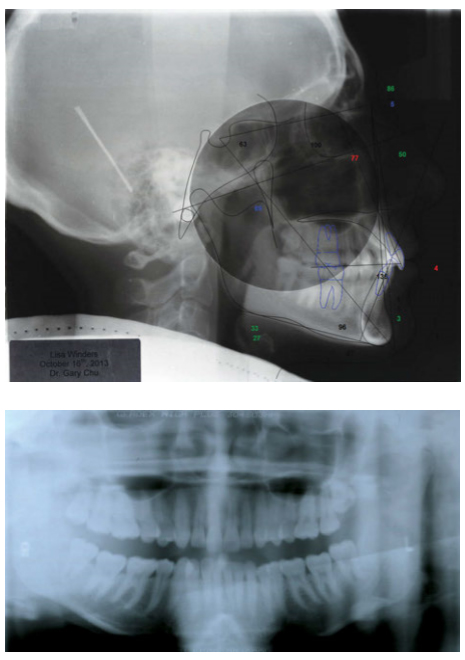
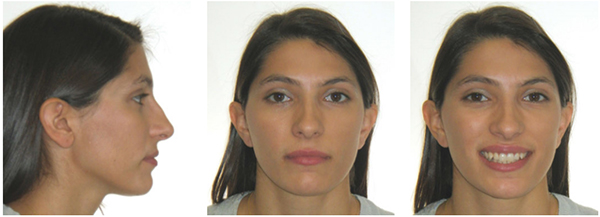

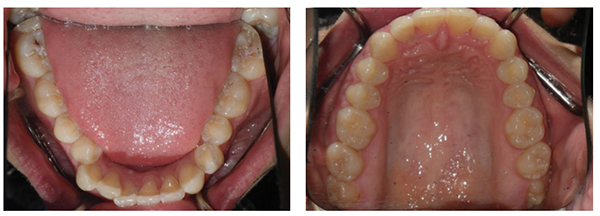
50% reduction: 18-month treatment completed in 9 months
In this particular case, the patient was on board, committed to my treatment plan, and bonded in October 2013. I typically change wires at 10-week intervals with Damon brackets, but with AcceleDent, I discovered that I was able to change her wires every 5 weeks.
Treatment began with a .014 Nitinol wire to engage tooth movement; this wire is essentially a wake-up call for the tissues. I extended the .014 wire through the first molars because extending it further posteriorly could have created a situation where the wire might come out while the patient was eating. When I progressed to the .018 Nitinol wire, I extended that through the second molars. The third molars were not addressed during treatment at the patient’s request.
The .014 x .025 Nitinol was the first rectangular wire I used with this patient, and it began the development of the arches and initiated root alignment. Typically, it is critical to leave this wire in for 10 weeks, but again, I was happy with tooth movement after just 5 weeks with AcceleDent. The .018 x .025 Nitinol was the largest Nitinol wire we used, and it achieved the majority of the arch form and root alignment that I look for in all my finished cases. The .018 x .025 Nitinol was again used for 5 weeks instead of the 10 weeks that is typical with standard treatment.
The final wire was the .016 x .025 TMA, which allowed for any remaining corrections following the rectangular Nitinol wires. Perhaps one of the greatest benefits of the accelerated treatment with AcceleDent is arriving at final wires with ample time to apply artistic bends enhancing and perfecting a patient’s smile. In standard treatment, patients are typically burned out and impatient by the time they get to the finishing wires. However, we now get to the final wire faster with AcceleDent, and I still have time to be selective and precise with detailing the finished result.
Prior to debonding, impressions and a panorex were taken to evaluate the alignment and also check for proper function, including incisal guidance and cuspid rise. Short Class II elastics began with the .014 x .025 Nitinol wires and continued until debonding. Retention consisted of a bonded lingual 3 x 3 and upper and lower vacuum molded removable retainers.

This patient was debonded in July 2014. As you can tell from her wedding photos, she had a very confident smile on her big day. Additionally, she recalled experiencing little to no pain throughout treatment. I have to say she was the perfect patient and complied with everything that was asked of her, including using her AcceleDent for 20 minutes daily. She was obviously very motivated by her deadline, but it’s also important to note that she had a very demanding schedule as she was working full time, going to school to earn her master’s degree and, of course, planning her wedding. Accelerated treatment was especially important to her considering that she committed to driving over half an hour to and from every visit.


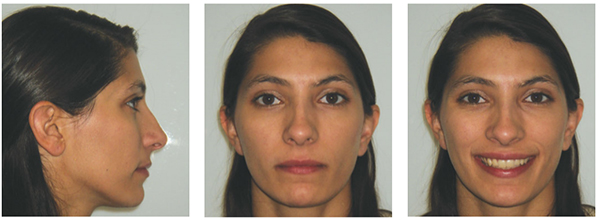

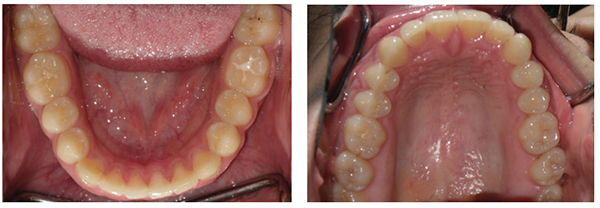
Accelerated orthodontic treatment is standard of care
My primary takeaway from this case is that a 9-month treatment of a Class II, Division I malocclusion case is possible because of the appliances and technology that are now available to orthodontists. AcceleDent works well with the Damon System because it enhances bone remodeling with such light forces that we are able to achieve excellent expansion posteriorly, which means that the majority of my cases are now non-extraction. Since the Damon System allows us to keep the forces light and biologically compatible, we are not cutting off blood flow to the teeth; we are actually encouraging osteoblastic and osteoclastic activity while avoiding necrosis and microtrauma.
Similarly, AcceleDent enhances that protocol because the micropulses of the device’s SoftPulse Technology® are intended to increase bone turnover in order to accelerate tooth movement. AcceleDent cycles at a frequency of 30 Hz, far less force than what is used to chew gum and 8 times less than what is emitted through a power toothbrush.
Damon in conjunction with AcceleDent has become my practice’s standard of care. All of my new patients automatically receive AcceleDent, and the cost is included in the overall treatment fee. Our practice has a reputation for providing the highest quality of care to our patients, and our community has come to realize that accelerated orthodontic treatment is now a part of the care that people have come to associate with Chu Crew Orthodontics.
[/userloggedin]
[userloggedout][/userloggedout]
1. Pavlin D, Anthony R, Raj V, Gakunga PT. Cyclic loading (vibration) accelerates tooth movement in orthodontic patients: A double-blind, randomized controlled trial. Semin Orthod. 2015;21(3):187-194.
Stay Relevant With Orthodontic Practice US
Join our email list for CE courses and webinars, articles and mores


